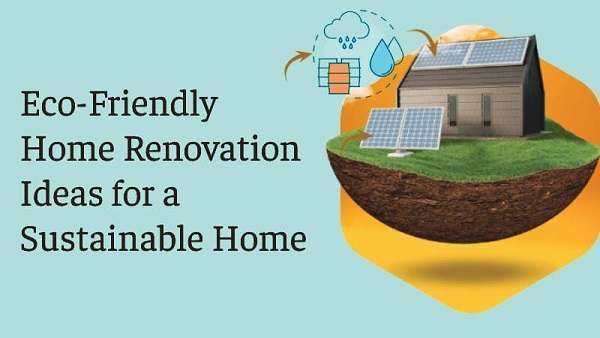10 Eco-friendly Home Improvements That Save Your Money
Home » Informational » 10 Eco-friendly Home Improvements That Save Your Money
Engaging with eco-friendly home improvements
In our quest for a sustainable lifestyle, eco-friendly home improvements have emerged as powerful tools for safeguarding our planet and enhancing our financial health. This comprehensive guide will navigate through 10 of the best eco-friendly home upgrades that promise to align with your green living aspirations and be kind to your wallet.
From lighting solutions that brighten your space more efficiently to appliances that sip rather than guzzle energy, each section draws upon authoritative sources like the Energy Star program, the Department of Energy, and the National Renewable Energy Laboratory, ensuring you’re equipped with reliable information to make impactful changes.
1. Lighting the way with LED
Transitioning to LED lighting is a bright start. According to Energy Star, LED bulbs use up to 90% less energy and last 25 times longer than traditional incandescent bulbs, potentially saving an average household about $225 annually. Imagine the difference it makes when the light in every room contributes to your savings and the environment’s well-being.
2. The efficiency of Energy Star appliances
Upgrading to Energy Star-certified appliances can lead to substantial reductions in energy costs. Energy Star’s standards ensure appliances are energy-efficient, with savings calculators available online to help you estimate your potential savings. Swapping out your old fridge, dishwasher, or dryer for an Energy Star-certified model could significantly lower your utility bills.
3. Sealing and insulating for savings
The Department of Energy highlights that weatherization improvements such as sealing air leaks and adding insulation can slash heating and cooling costs by up to 15%. Whether sealing windows or insulating your attic, these upgrades can contribute to a comfortable home environment and appreciable savings.
4. Solar energy: Harnessing the sun
Installing solar panels, while requiring an initial investment, can lead to substantial savings and increase your home’s value. The National Renewable Energy Laboratory notes that, with available federal tax credits, the financial payback period for solar panels can be between 6 to 12 years, after which they generate considerable electricity cost savings.
5. Water-efficient fixtures
Adopting WaterSense-labeled faucets and showerheads can lead to significant water and energy savings. The EPA’s WaterSense program states that such faucets can use up to 30% less water, saving around 700 gallons of water per faucet annually. Moreover, efficient showerheads reduce hot water usage, decreasing water heating costs.
6. Smart thermostat installation
Installing a smart thermostat can help manage your home’s heating and cooling systems more efficiently. Consumer Reports explains that smart thermostats can learn your preferences and adjust settings automatically, potentially reducing energy consumption by up to 10% and saving about $50 a year.
7. Low-flow toilets for water conservation
Switching to WaterSense-labeled low-flow toilets can drastically reduce water usage, saving thousands of gallons annually. Consumer Reports encourages homeowners to consider this upgrade for environmental and financial savings.
8. Exploring tax credits and rebates
Investing in energy-efficient upgrades can be made more affordable through federal and state tax credits or rebates. The Department of Energy discusses the availability of these incentives for various upgrades, such as solar panels or geothermal heating systems, significantly reducing upfront costs.
9. DIY vs. professional installations
While some weatherization projects can be DIY, others may benefit from professional installation. The Department of Energy suggests that homeowners can easily handle projects like caulking, whereas installing blown-in insulation might require professional expertise to ensure maximum efficiency and safety.
10. Detecting and repairing leaks
A simple but often overlooked aspect of home improvement is leak detection and repair. The EPA recommends checking for leaky faucets and toilets, as a small leak can waste hundreds of gallons of water annually, affecting your water bill and the environment.
In conclusion
Embracing eco-friendly home improvements is not just about making your home greener; it’s about making smart investments that pay off in the long run. By incorporating these sustainable upgrades, from LED lighting to solar panels and water-efficient fixtures, you’re contributing to a healthier planet and enjoying significant financial savings.
As you embark on these improvements, remember to research and find reputable appraisers and experts to guide your decisions, ensuring that your investments are environmentally and financially sound. Let’s build a sustainable future, one home improvement at a time.


